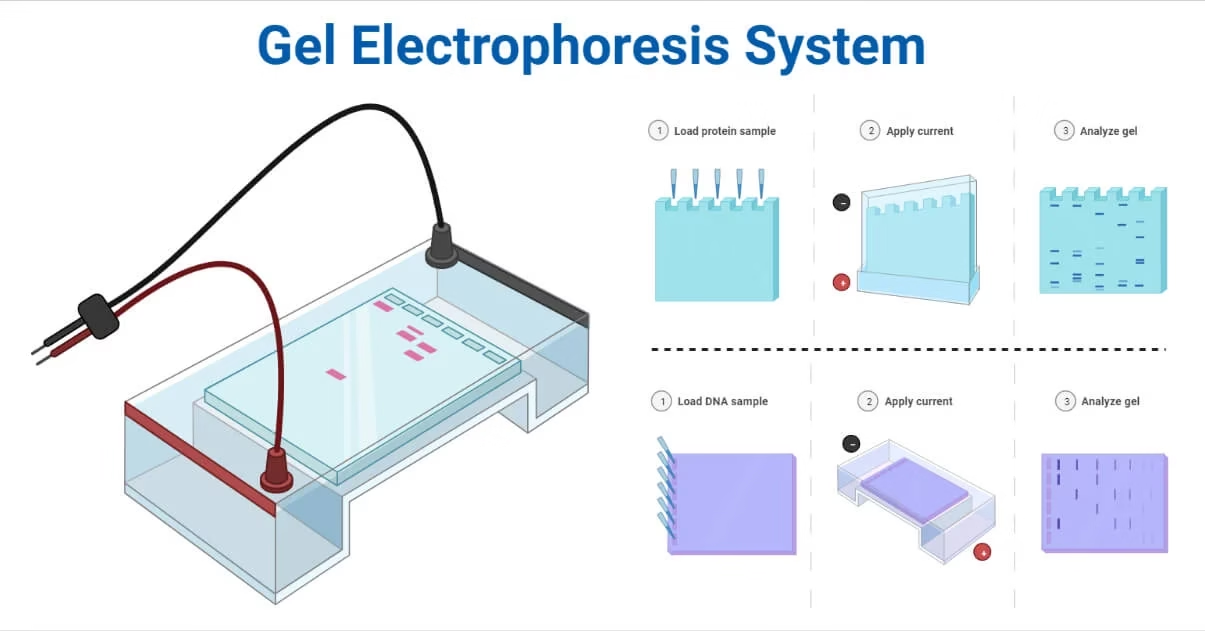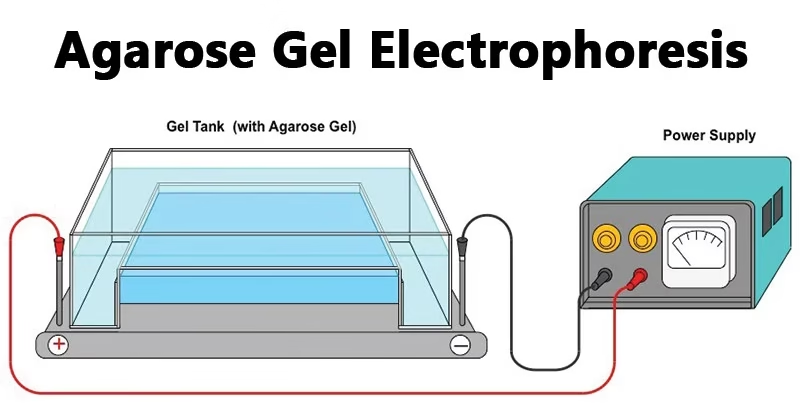Gel Electrophoresis System – Definition, Principle, Apparatus, Types, Examples, Applications, Advantages & Limitations
Gel electrophoresis is mainly used to separate DNA, RNA, and proteins based on their size, charge, and shape. It is one of the cornerstones of molecular biology and biotechnology. Gel electrophoresis is like a molecular sieve that helps scientists “see” and separate biomolecules.

